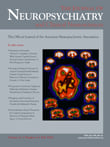Parkinson’s Disease: Presenting a Gray Box Model
To the Editor: Parkinson’s disease is one of the most common neuromuscular disorders. The disease has a variety of movement symptoms. Neural modeling can be useful to analyze the brain behavior and to understand the disease. Modeling the disease is more convenient, inexpensive, and faster than experimental and clinical researches. Computational models could help researchers to predict different treatments and study some hardly accessible states of the disease, such as early mild stages. The important constraint of the model could be the presentation of a gray box model (i.e., presenting a model that considers not only the input/output data but also other information about the system). The integrity and robustness of the model will be more reliable if more characteristics of the model are considered. It is obvious that we cannot introduce white box model for biological systems because of the complex system structure.
Because of the vast range of the recordable Parkinson’s disease movement disorders, this disease has attracted scientists and has excited them for mathematical modeling. 1 , 2 Unfortunately, despite the presence of physiological information about Parkinson’s disease, most of the models have studied the disease as a black box. Therefore, we are to present a model that simulates the symptoms based on physiological findings.
Analyzing the clinical recordings such as tremor, posture, and stride-time intervals has elucidated the chaotic nature of this signal. Therefore, a proper model should be able to simulate the chaotic behavior. 3 , 4 Modeling chaotic systems is difficult because of their high sensitivity. Owing to the variable nature of chaotic signals, it is not suitable to use signal time series for modeling. It is wise to get different signals in different recordings and then assess global features of these chaotic signals (such as Lyapunove exponent, fractal dimension, attractor properties, and poincare section).
Most available models of Parkinson’s disease are limited to I/O data (black box). Now, we propose to consider physiological findings in order to have a gray box model. The main cause of the disease is the loss of dopaminergic neurons in basal ganglia. Hence, the healthy persons and patients differ only in basal ganglia structure. Some information is available about basal ganglia segments and the connections between them. We employ Chaotic Neural Network for each block to have the most similarity to neural structure of basal ganglia blocks. We propose using available information about basal ganglia to train Chaotic Neural Network weights.
It is believed that the basal ganglia plays its role in movement control by reinforcement learning. The dopamine neurons’ activity encodes the reward prediction error. 5 In fact, healthy persons learn new patterns of movement based on trial and error (reinforcement learning). Therefore, we train our model using reinforcement learning methods. This training network is biologically plausible and helps us to understand the interaction between blocks. In Parkinson’s disease, the reward prediction error would be distorted and the reinforcement learning is not done. In addition, the stochastic properties of neurotransmitter behavior are increased because of uptake, up-regulation, and distortion of neurotransmitter diffusion. This stochastic behavior is the main cause of the disease and can simulate disease symptoms. Using the proposed model of Parkinson’s disease, early diagnosis and treatment of the disease may be possible.
1. Titcombe MS, Glass L, Guehl D, et al: Dynamics of Parkinsonian tremor during deep brain stimulation. Chaos 2001; 11:766–773Google Scholar
2. Haeri M, Sarbaz Y, Gharibzadeh S: Modeling the Parkinson’s tremor and its treatments. J Theor Biol 2005; 236:311–322Google Scholar
3. Hausdorff JM, Ashkenazy Y, Peng CK, et al: When human walking becomes random walking: fractal analysis and modeling of gait rhythm fluctuations. Physica 2001; 302:138–147Google Scholar
4. Pascolo PB, Marini A, Carniel R, et al: Posture as a chaotic system and an application to the Parkinson’s disease. Chaos Solitons Fractals 2005; 24:1343–1346Google Scholar
5. Doya K: What are the computations of the cerebellum, the basal ganglia, and the cerebral cortex? Neural Netw 1999; 12:961–974Google Scholar



